Main Best Regards Takeaways:
- Ending a message with best regards shows you respect the recipient.
- It’s a way to say farewell and conveys warm wishes.
- You can use best regards for semiformal or informal communication like emails.
- This phrase is a valediction, or closing, to correspondence. It’s similar to “cordially” but is less formal.
- Some alternatives are kind regards, warm regards, and regards.
Make a positive impression on clients and colleagues by ending written correspondence with best regards. Check out examples of how to best use this popular letter closing remark and find alternatives to help mix it up.
What Does it Mean to say Best Regards?
Best regards is a popular closing for written correspondence, including emails. When someone drafts a message with this phrase, it means that they’re sending warm wishes your way. It’s also another way of saying “cordially” or “I wish you well” but is less formal. Best regards is a semiformal valediction, or a word or phrase that appears before a signature. This phrase is more informal than sincerely but still exudes respect. You can use this versatile closing in an email or letter. Use a capital ‘B’ and ‘R‘ when signing off with this phrase. Then, add a comma after the phrase.
I’ve attached your invoice for this month’s services. Thank you for choosing Freelancer Financial for your investment needs.
Best Regards,
Julie Jarrow
As you can see, Julie capitalized the ‘B’ and the ‘R’ in this valediction. She also placed a comma at the end of it.
Avoid using an exclamation mark, no matter how excited you feel about your message. Exclamation points are best suited for casual valedictions.
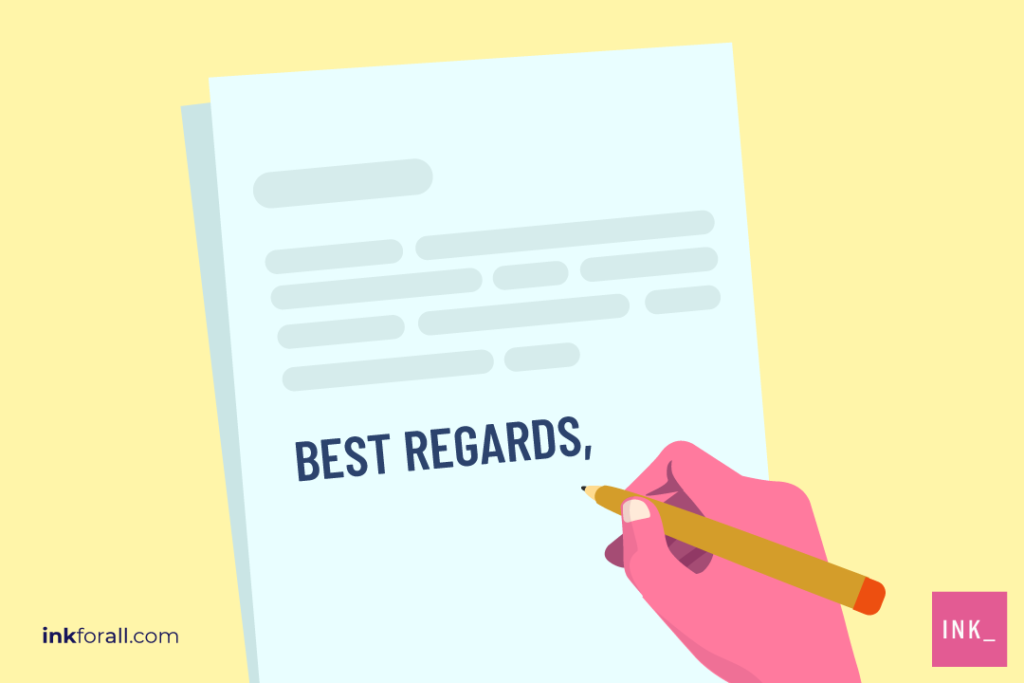

Is Best Regards Formal or Informal?
Best regards is a versatile closing that works well for semiformal or informal communication. You can use this phrase for people you know well or people you don’t, making it perfect for business emails. When using best regards for semiformal emails, choose acquaintances you respect. This friendly phrase conveys warm wishes without going overboard. Conversely, do not use best regards for more formal communication. Instead, other options like “Sincerely,” and “With Gratitude,” are more appropriate.
Can you say Best Regards in an Email?
Best regards is appropriate for emails, but you can also use it for other types of semiformal written correspondence like handwritten or typed letters. What’s more, you can also use this closing in company memos. Similarly, it’s also appropriate for notices on school or company bulletin boards. Finally, it’s also appropriate for text messages and social media messages.
- Emails
- Handwritten or typed letters
- Company memos
- Text messages
- Social media messages
- Notices on bulletin boards
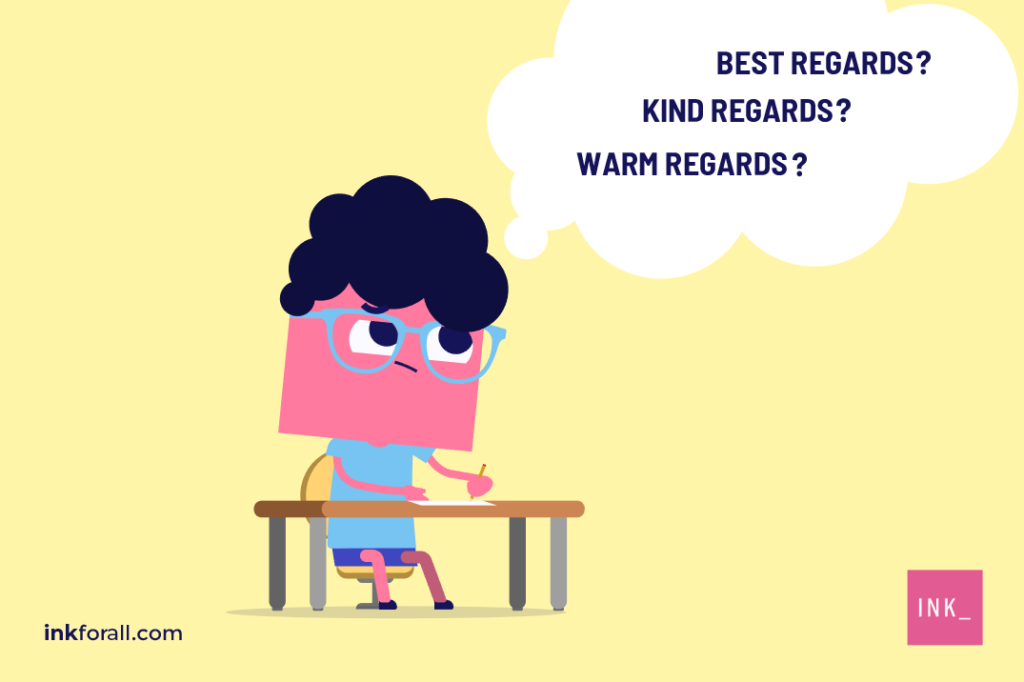

Let’s pretend two neighbors are chatting via email:
I gave your kids some potato chips and soda while they were hanging out with my son. Hope you don’t mind.
Regards,
Jim
Notice the casual tone of the message? The message is informal, but Jim knows and respects Jeff. That’s why he’s giving him a quick heads up about the snacks. He didn’t use a salutation or last name because Jeff knows Jim well.
But what if Jim is having problems with Jeff’s kids?
The email might read like this instead:
Yesterday afternoon, your son placed a dandelion in my mailbox. My bills and magazines are now covered in white fluff, and I am not happy. Going forward, please have your son leave my mailbox alone. Tampering with someone’s mail is a federal offense.
Sincerely,
Jim Davidson
Jim is annoyed that Jeff’s son put a dandelion in his mailbox, so he drafted this complaint. He finished his email with “Sincerely,” a formal closing. He also used his first and last name, which is typical in formal communications.
What can I say Instead of Best Regards?
Consider the subject matter of your message, plus your relationship with the recipient. You could use “Warm Regards” or “Kind Regards.” Or, you may not need to include one at all. Formal alternatives to Best Regards include “Sincerely,” “Sincerely Yours,” “Yours Truly,” “Faithfully Yours,” “Respectfully Yours,” “With Sincere Appreciation,” and “With Gratitude.” On the other hand, some informal alternatives include “Best,” “Thanks,” “See you soon,” “Take care,” “Love,” “I miss you,” and “Hugs.” Alternatively, you can create a custom closing.
1. Formal Alternatives to Best Regards
Use these formal valedictions for cover letters, legal correspondence, and business letters:
- Sincerely
- Sincerely Yours
- Yours Truly
- Faithfully Yours
- Respectfully Yours
- With Sincere Appreciation
- With Gratitude
2. Informal Alternatives to Best Regards
- Best
- Thanks
- See you soon
- To infinity and beyond
- Onward and upward
- Cheers
- Love
- Your friendly [job title]
- Congratulations
- Take care
- Go get ’em, tiger
- Keep fighting the good fight
- You’ve got this
- Keep your head high
- Get well soon
- I miss you
3. You may not Need a Closing at all
A closing isn’t always necessary.
If you’re close with the recipient, simply signing your name might be enough. You can also add a one-line paragraph above your signature, such as“Have a great day.”
Best Regards, Kind Regards, and Warm Regards: Are They All the Same?
Many message writers use best regards, kind regards, and warm regards interchangeably. But is that socially acceptable?
Possibly. Best regards means you’re sharing warm wishes, which isn’t much different from sending warm regards. The same can be said for expressing kind regards.
However, simply closing an email with regards may mean something different. Adding regards above your signature is generally less formal than best regards and similar valedictions.
Valedictions don’t have to be unique or engaging. When you need a classic yet respectful closing, go with best regards.
What’s are the Best Ways to Close a Letter? Test Your Skills!
Best Regards Question #1
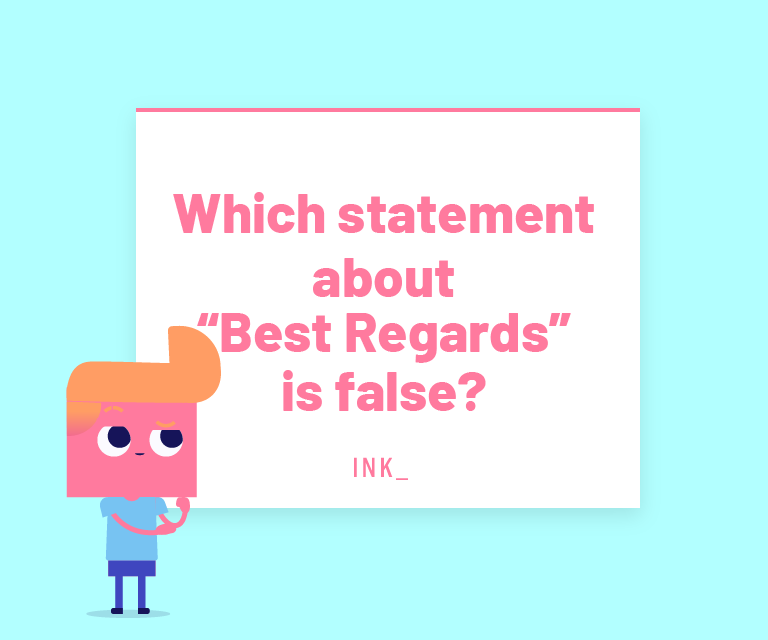

The answer is C. Best Regards is ideal for informal and semiformal communication.
Best Regards Question #2
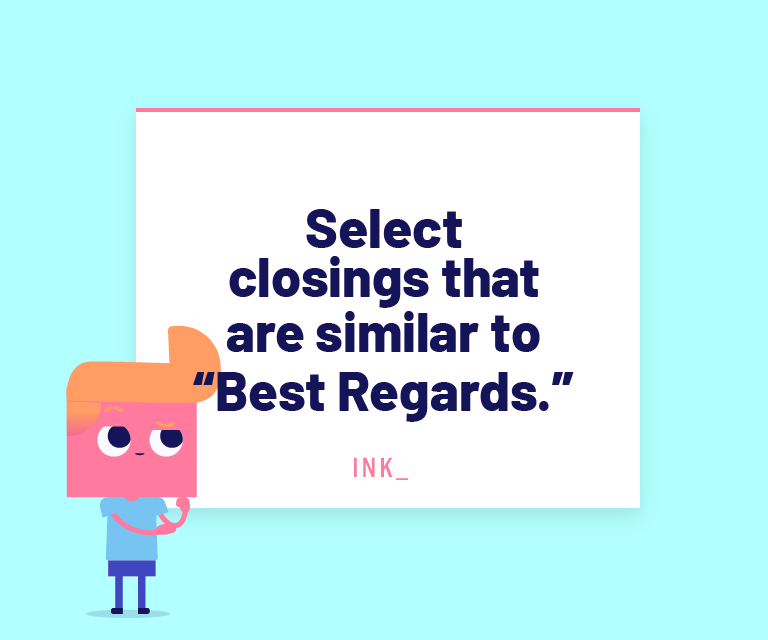

Please select 2 correct answers
The answers are A and D. Sincerely and Yours Truly are better suited for formal communication.
Best Regards Question #3
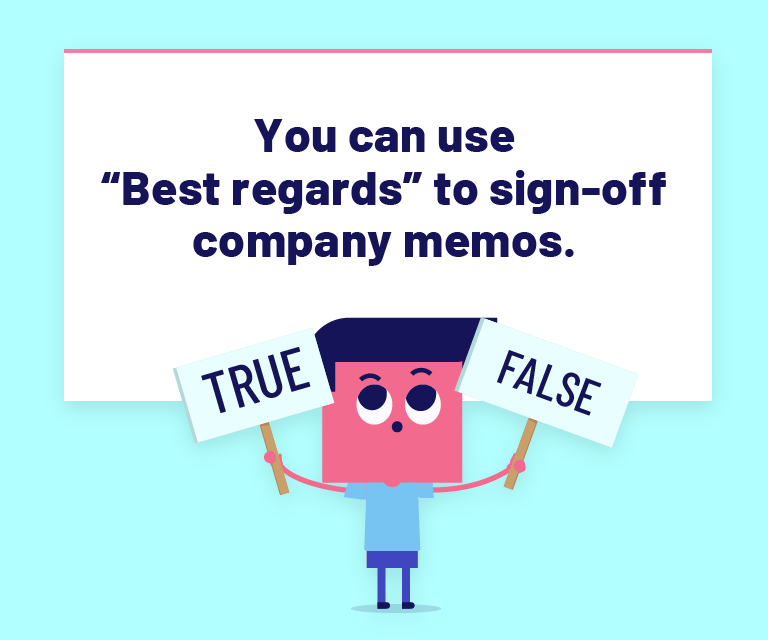

The answer is TRUE. Best Regards is perfect for semi-formal writing such as a company memo.
Best Regards Question #4
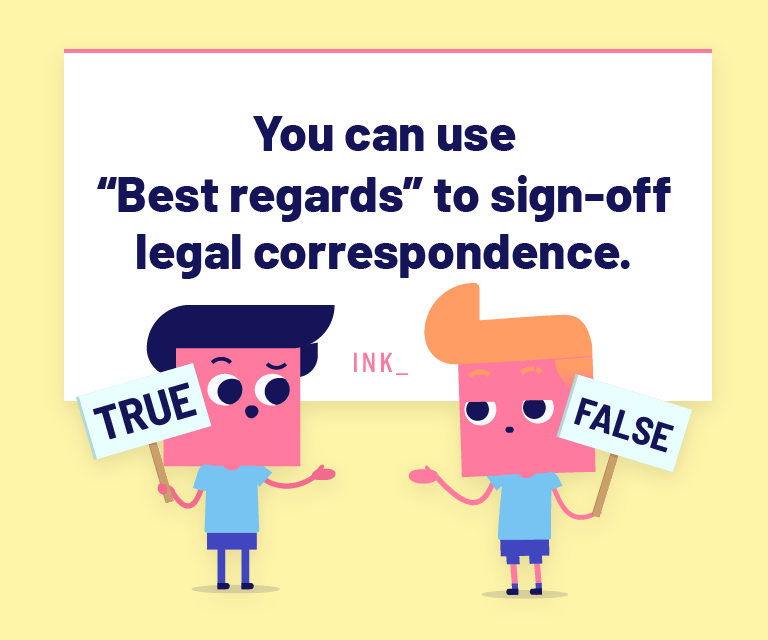

The answer is FALSE. Best Regards is not ideal for formal writing such as legal correspondence.

I’ve always struggled to identify whether it is more correct or appropriate to write a closing/validation as ‘Kind Regards’, with both words capitalised, or ‘Kind regards’, with only the first word capitalised.
Can you please help me to clarify this?
Sure thing, Meagan, happy to help! The rule is to capitalize the first word of the closing. This applies to Kind regards, Best wishes, etc. Hope this helps!